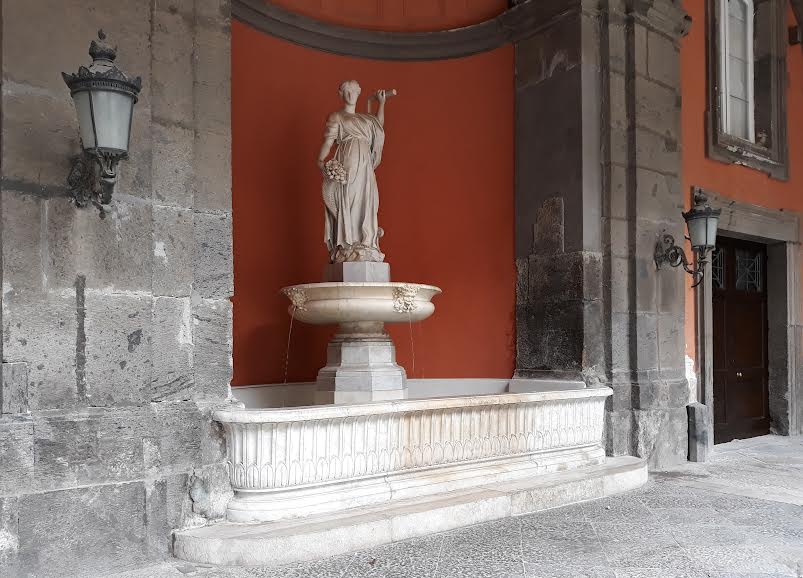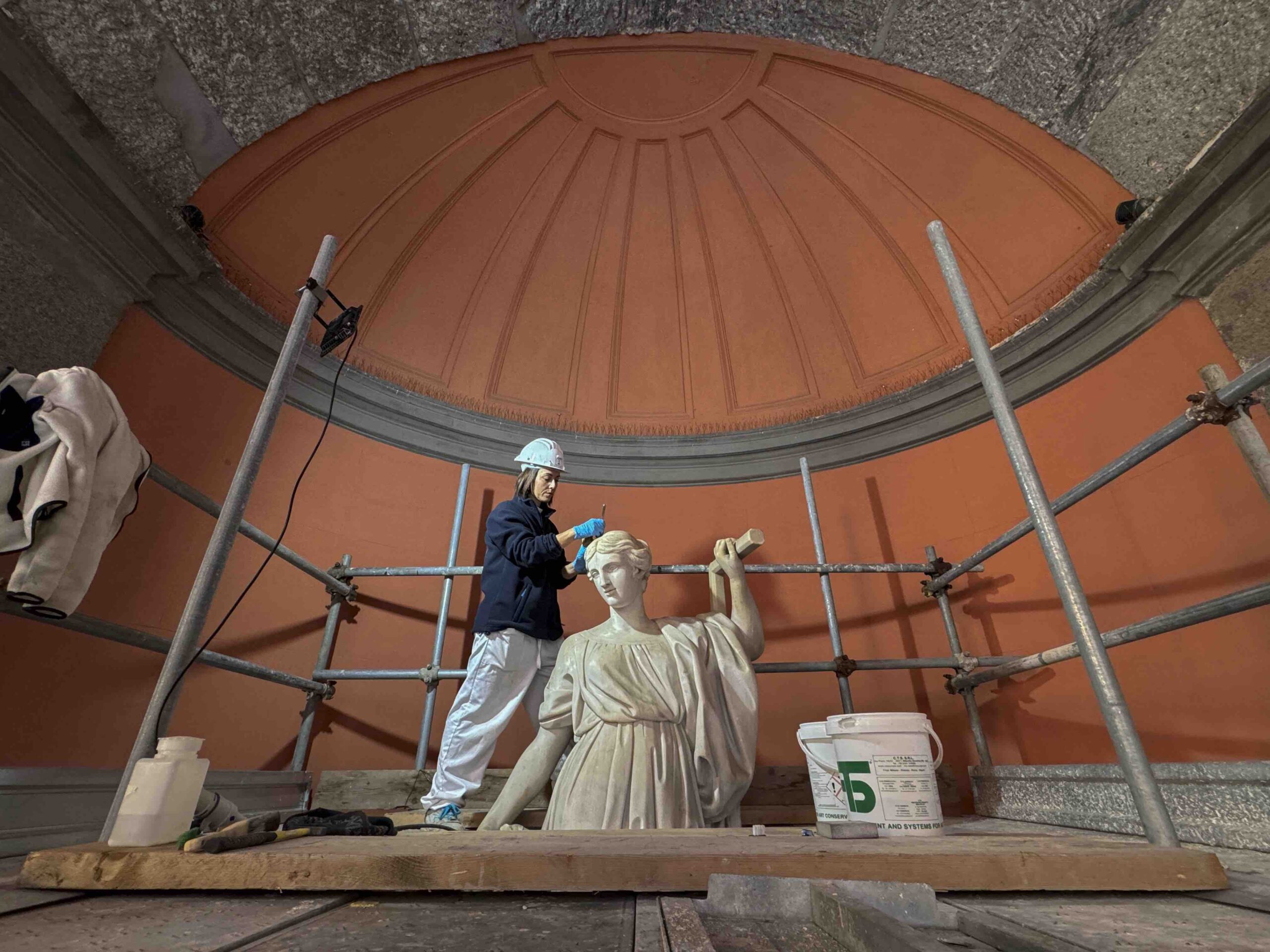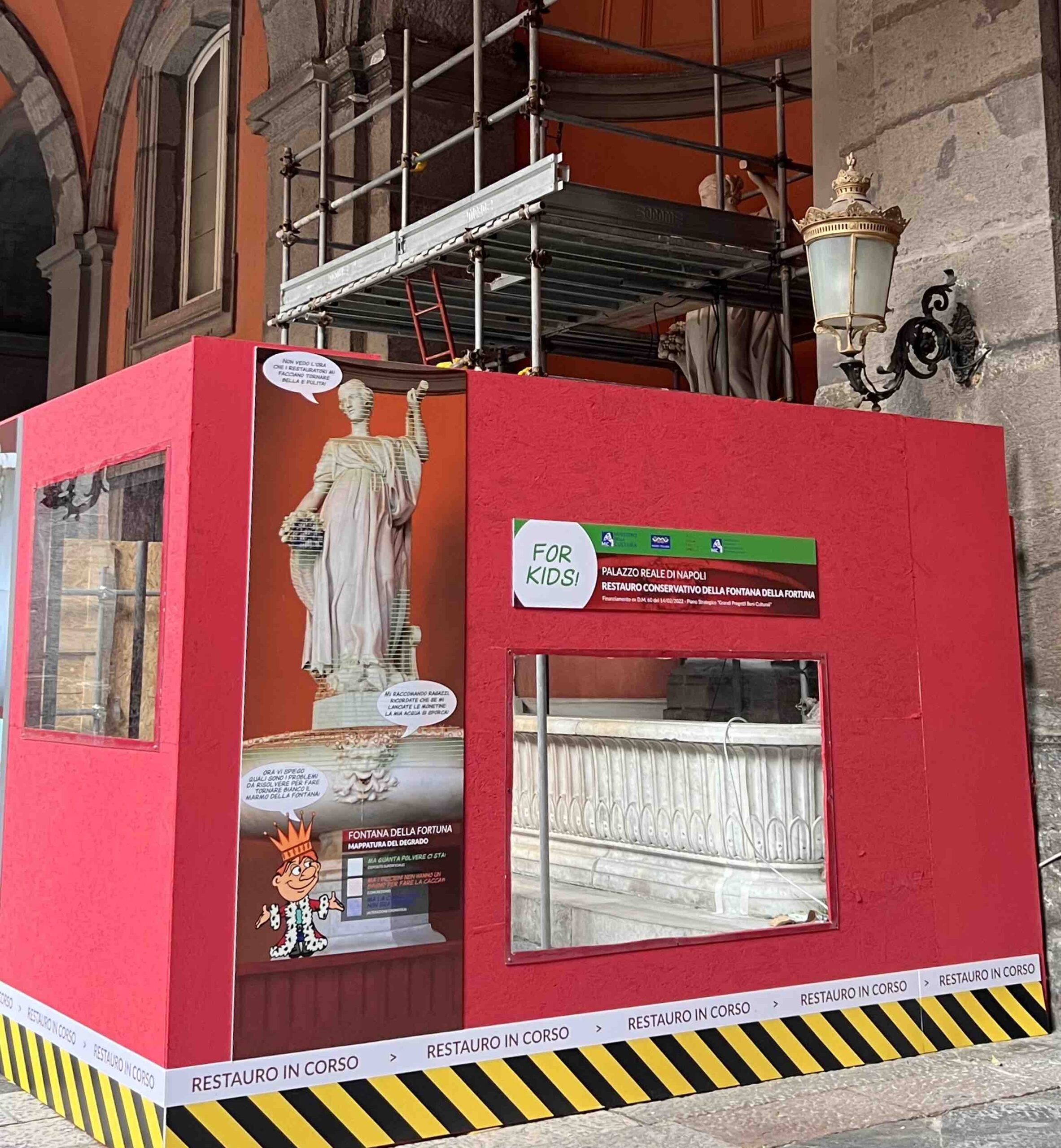
Restoration of works of art and our artistic heritage is extremely important to protect, preserve and enhance what our ancestors have handed down to us and what we must leave to future generations.
At the Royal Palace of Naples, the restoration of the Fountain of Fortune, located in the Courtyard of Honor, is underway as part of a large-scale redevelopment project that is bringing new light to this building.
The restoration of the Fountain of Fortune at the Royal Palace of Naples

The restoration of the Fountain of Fortune represents a key step in the process of preserving and enhancing the Royal Palace of Naples, a true jewel of Italian architecture and history.
The Fountain of Fortune, set in a large niche in the center of the eastern side of the Courtyard of Honor, is an excellent example of art and design.
Made in the mid-19th century by architect Gaetano Genovese, it features an elongated basin with palmette decorations, and a statue of Fortune by Giuseppe Canart, originally created for the Molo Grande fountain on commission by Charles of Bourbon in 1742 and later moved to its current location.
THE FOUNTAINS RESTORATION PROJECT AT THE ROYAL PALACE IN NAPLES
This particular intervention closes the cycle of restorations dedicated to the Palace’s fountains.
Previously, the Oval Fountain in the Carriage Courtyard was restored to its former glory, coinciding with the inauguration of the Caruso Museum. The two fountains with circular basin in the Hanging Garden were also recently restored, offering visitors fascinating water features.
A RESTORATION OPEN TO THE PUBLIC
Interesting is the decision to make the restoration site of the Fountain of Fortune visible to the public, allowing visitors to observe the restorers at work up close. A porthole, also positioned at children’s height, has been installed to allow a full view of the process until the completion of the work, scheduled for spring 2024.
The Fountain of Fortune had already undergone restoration in 1994, but this new intervention is part of the redevelopment of the Cortile d’Onore, which is destined to become the museum’s reception center, with the opening of new facilities such as the ticket office, Factory Museum, bookshop and cafeteria.
The project is not limited to cleaning and restoring the pool and statue, but also includes the installation of a new water recycling system. This initiative is part of the Royal Palace’s energy-saving program, demonstrating a commitment to sustainable practices.

This restoration represents not only conservation but also a renewal of history and art, helping to keep the cultural richness of the Royal Palace of Naples alive.
CONCLUSION OF RESTORATION
The Fountain of Fortune, located in the prestigious Cortile d’Onore of the Royal Palace of Naples, was unveiled to the public on March 28, 2024, after careful restoration.
This jewel of Naples has returned to its former glory, giving visitors a plunge into the magnificence of Naples’ past.
The skilled hands of restorers brought back the fountain’s original beauty in less than three months.
An open construction site allowed the public, including the little ones, to closely observe the stages of restoration through special openings in the fence. Prior to the official opening, a technical seminar was held where Barbara Balbi explained the various stages of the restoration, sharing images documenting the meticulousness of the work done.
“This restoration required special attention,” commented Dr. Balbi, “since although the overall condition was acceptable, some structural components had significant damage to the valuable stone material. It was a true team effort, integrating conservative, functional and aesthetic aspects of the restoration.”
The intervention marked the completion of the Palace’s fountain restoration project, which began in July 2023 with the restoration of the Oval Fountain in the Carriage Courtyard. Both fountains are now equipped with a modern water recirculation system, installed by Top Impianti srl, contributing significantly to the reduction of water consumption.
Almerinda Padricelli, project manager, stressed the importance of the funding received from the MIC’s ‘Major Cultural Heritage Projects’ Strategic Plan, amounting to about 140 thousand euros. “These works not only enhance the artifacts,” said the architect, “but also include a key element in the Palace’s energy-saving program, highlighting the commitment to sustainable management of the site.”
The Fountain of Fortune and the Royal Palace of Naples represent not only a testament to the city’s rich history, but also an example of the commitment to the preservation and enhancement of cultural heritage. The rebirth of these historic symbols offers visitors a unique opportunity to connect with the most authentic essence of Naples, uniting past, present and future in an unforgettable experience.

